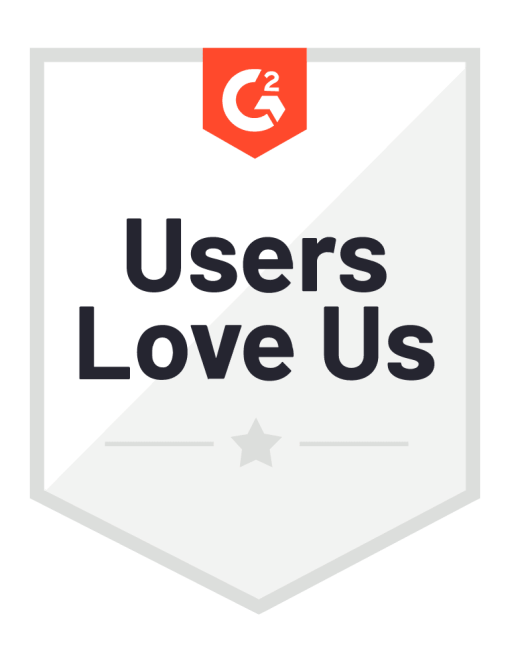In the modern era of SaaS products, being a customer-centric company that prioritizes the customer’s needs above all else is the key to success.
According to Janna Bastow, CEO and Co-Founder of ProdPad, customer-centricity is no longer something that gives you an advantage, it has become a necessity.

Being customer-centric is now a necessity, because if you’re not paying attention to what the customers need and delivering to that, then somebody else is going to, and the customers will vote with their money.
So today, let’s talk about that. Here’s a recap of our recent webinar, where Pulkit Agrawal, our CEO and Co-Founder, and Janna Bastow covered everything about how to be customer-centric as a product leader and why it is so important for SaaS products.
🎬 How to be customer-centric as a product leader
Prefer to watch the full webinar instead of reading the summary? Watch it right here 👇
What does it mean to be customer-centric?
A lot of companies might think that being customer-centric and customer-driven is all about putting emphasis on the customer. That’s all true, but the problem is when companies do this at the expense of their business needs.
Janna Bastow puts it this way:

[Customer-centric] means being focused on the customer’s needs but still aimed at the business outcomes themselves.
In other words, being customer-centric is about aligning the customers’ needs with your business needs. No matter how much the customer insight tells you to go in one direction, if it has little to do with building your business, it’s not worth pursuing.
What being customer-centric is not
It might sound counterintuitive that a company can be not focused on its customers, since it’s so crucial to running a successful business, but it happens quite a lot.
For instance, one example of companies losing customer centricity is when they become established as monopolies or oligopolies. Think of old-school banks or telecom giants. These are organizations that have become so essential and embedded within their customers’ lives that they can start to disregard customer needs if it suits them. The net result is that customer experience becomes worse because their needs are simply not being taken care of.
But outside of such blatant lack of consideration for the customer, there is more nuance to what consists of not being customer centric. Primarily, it has to do with the evolution of the product.
When you bring a new product to the market, you’re always thinking about how people are going to interact with your product for the first time, because that’s how you’re going to start getting customers. However, as your product evolves and you stay in the market for a number of years, your problems will shift, and your focus will drift away.
Pulkit Agrawal describes how this often happens.

As your product evolves, you think about retention, upsell, expansion, and you kind of lose focus a little bit on the first mile because you're not in that phase any more – where people are signing up for the first time –so this might be the point when the customer-centricity starts to slip.
In fact, Janna Bastow asserts that it’s easier to be customer centric in the beginning, because you have one cohort of customers to serve.As you grow, you have more and more cohorts of customers who come in and have different sets of demands and expectations.
Different stages will come with different needs when it comes to being customer-centric, so teams need to keep up to speed if they wish to capture a broader set of customers and grow.
For example, early adopters who will most likely be your customers at the beginning are more accepting of technical issues and gaps in customer support as you figure things out. But later as you get more known and your product becomes more widespread, people will come to you for stability and expect excellent customer support. And this is all the while catering to your existing customers who stuck around from the beginning, as their own expectations expand.
Essentially, evolving with your market is not about losing focus on certain areas while giving deference to others. It’s about leveraging your experience to be more effective in managing all of those different expectations.
How to embed customer-centricity into the culture of a team
Being customer-centric is not a one-time thing. It has to be ongoing for the long term, and that means customer-centricity has to be installed deeply into the culture of the team, because putting the focus on the customer is a way of thinking. It is not an objective or a goal, but a philosophy. So how do you build customer-centricity into the company’s culture?
1. Be a customer-centered founder
To Janna Bastow, the culture stems from the founder.

A lot of small startups have that customer centricity built in because the founders were customer centric.
This is important because the founder is the first person who has the opportunity to set the culture of the company, and cultures are usually difficult to change after they have been established.
Besides, having a customer-centric focus is beneficial for a company especially at early stages, because that’s what figuring out product-market fit is all about. What does the customer need? This is a question you must always ask yourself, especially if you’re a founder.
However, there comes a time when the founder cannot be as customer-centric as they used to be. As the team grows, their role also changes and diversifies. Founders become increasingly spread thin, which may affect how customer-centric they are.
That brings us to the next point.
2. Hire the right people
Your company culture is as good as your people. So in order to have customer-centricity built into the culture, ensure that the people you hire have a customer-centric mindset. Put it front and center during the hiring process, and lead by example to show what customer-centricity really looks like.
Janna Bastow sums it up nicely.

It's about making sure that the people who are hired are clear on what the problem is that you're trying to solve and why you're trying to solve it that way.
3. Measure your customer-centricity
It is not enough to simply put customer-centricity forward. You have to practice what you preach, and in order to do that, you need to be able to concretely measure how you’re doing.
There are quite a few metrics that you can rely on in order to see how you’re doing on customer-centricity.
For instance, Janna Bastow points out that customer outreach could be one such metric. It might include how many calls were made to check-in with existing customers, how many outreach attempts were made to potential new customers, or how many demos were done. Such statistics could be a good gauge of whether you are actively talking to customers.
Another metric could be around how many support tickets you are resolving, or how many bug reports you managed to address during a certain week. Because each interaction is an opportunity to show your customers how much you are committed to their success.
Janna Bastow found this to be very true, so much so that it became an indicator of success for her team at ProdPad. For example, they found that people were more likely to buy ProdPad if they previously submitted a bug ticket, because through the subsequent interaction, ProdPad was able to show the customer how great of a customer experience they would have.
4. Encourage a customer-centric approach
Every customer interaction is an opportunity to learn and improve. This is why you need to have a system in place, in which you can share ideas with other team members, and invite feedback on how conversations with customers can be improved.
As Pulkit explained, here are some tactics that our team at Chameleon uses to keep our focus on customers.
Having a shared library of calls: Chameleon’s team conducts quite a few number of calls with customers, such as quarterly business reviews, troubleshooting calls, as well as sales calls. This is a great way to keep everyone synchronized on the company’s customer interactions, as well as a fantastic educational tool.
Reviewing calls: It is now fairly common for our team to watch calls and discuss how the calls went. Once again, this keeps everyone focused on how to better serve customers, and it’s a great forum for sharing ideas, as well as learning how to talk to customers better.
Running insights calls: These are shared calls that bring together multiple teams such as Customer Success, Product, Sales, and Marketing. Once again, it’s about encouraging conversation around how to serve our customers better and what we can improve on.
How to hire and onboard for customer-centricity
So, how do you exactly hire for customer-centricity? And what would the onboarding process look like? Let’s hear what Janna and Pulkit have to say.
Hiring for customer-centricity
Janna Bastow emphasizes that right from the bat, you should ask your candidates whether they are excited by the prospect of working for your team and why. For example, you could explain why your product exists and why you're working with customers the way you do, and see whether their eyes light up. Is this something that they are excited about?
Essentially, you should be able to pick up on whether they are truly looking forward to working with you and empathize with your customers in a genuine way.
Onboarding for customer-centricity
Once it comes to onboarding new people on your team, it is your chance to get them up to speed.. At this point, you can really show them how it’s done, and make sure they are seeing how existing team members, as well as leaders, have become customer-centric. This is the moment where you give new hires as much material as possible and involve them actively in customer interactions to get them prepared.
Pulkit describes how Chameleon does it in order to properly onboarding new team members for customer-centricity:
Give relevant reading material: This can be your blog posts, your resources, or other relevant material that teaches the employee on what your customers are like, and what they expect from your product.
Coach the person: At Chameleon, we really try to coach people for the first two weeks. It’s not just about the product, but around the use cases of the product, as well as how the product addresses the needs of the market. We also get the new hires involved in actually using the product and knowing it inside out, such as having them in for bug testing sessions, as well as assigning them objectives in a sandbox environment.
Examine the competition: This is where new hires read through our competitors’ websites, follow their blogs, speak to product people in our space, and more, to get into the environment or the headspace of being a prospective customer before they start worrying about our product.
Watch a ton of calls: There is nothing like having actual customer interactions in terms of getting to know your customers. The next best thing are recorded calls with customers. All of our new hires, no matter the role, are given numerous customer calls in various contexts such as sales calls, demos, and customer check-ins. These calls give a great introduction to our team about what our customers are looking for, and how they are interacting with our product.
Create friction logs for our product: This is one of the tasks we ask new people to do because they have a fresh perspective that the rest of the team doesn’t (since we’re already deep in the product).We ask them to do a friction log of their experience when using Chameleon for the first time. t's a two-way feedback loop. So we're continuing to understand from new people's perspectives what our(undesired) product friction is..It's a great UX exercise to try and uncover where there are issues in your product.
At the end of the day, your new employee should come out the other end of the onboarding with a solid understanding of what problems your customers face, and how your product is solving that problem. This is where they get the ‘why’ of the product down solid.
How to collect and manage customer feedback
One crucial way of being customer-centric is to listen to what your customers are saying. In other words, integrating customer feedback is absolutely essential to customer-centricity. Let’s go in detail over the best practices you should look out for when collecting and managing feedback.
Leverage existing customer channels for asking feedback
First, in order to get feedback, you need to ask for it. And the best places to start is to use already existing customer channels.
Janna Bastow points out that feedback should be built into customer support. For instance, when you close a support ticket, don’t just end it with a ‘thanks’ or a customary signoff. This is your chance to ask if there is any feedback your customers would like to give. This way, she asserts that it becomes extremely easy for the customer to give feedback since they are already talking to you.
She further notes that If your customers have to click five times to find your support button/widget or fill out three different forms to share their feedback with you, they might do it once or twice, but they're likely not going to do it every time -- or might not do it all.
So, instead of making it difficult for your customers to share their feedback,, try to find a way to include feedback prompts into your regular channels of communication with your customers. The best way to do this is by using in-product surveys.
Make the feedback contextual
Another important note about feedback is that it should be contextual. Imagine getting an email survey. You have a hundred emails to look at, so you just archive it. There’s no time for this.
Compare that to a situation where you use a feature and right after that you are prompted a short survey asking how your experience was. It’s in the moment, it’s relevant to your situation, and you’re much more likely to answer it.
In fact, this is what you can do with Chameleon’s Microsurveys that are presented in-app, and you can customize them to be timely, relevant, and contextual to your customer needs. Our Benchmark Report shows that response rates from Microsurveys go up to 60%.

Make feedback forms accessible at all times
Feedback can arise at any moment during the course of your user’s journey within your product, and in order to make sure that your users can submit their opinions whenever they want, your feedback submission form should be accessible to the user at all times.
For instance, always have a ‘give feedback’ option readily visible in the user interface. You don’t have to actively draw attention to it, but it should be where a user can easily access at any moment.
Organize the feedback
Collecting feedback is only the start. You need to organize the feedback so that your team can actually draw insights from it and use it for improvement.
For example, you need to know which users sent out certain feedback. Let’s say a group of users reported an issue about a new feature.. That original group of users would be ideal for testing the feature once you made improvements. But if you weren’t tracking that, you wouldn’t be able to close that loop.
So you should have a system under which feedback is organized. In Chameleon’s case, each feedback tool is integrated with Slack, so that responses are automatically sent to relevant team members into appropriate channels on Slack. A tool like Zapier can also automate your feedback collection process and streamline the organization.
Be agile and iterate quickly on feedback
In the end, it’s all about being able to actually act on the feedback you’ve gained. This is why being an agile team is one of the most powerful ways to iterate more quickly.
Being agile means you’re able to build something and then get it out in front of the customers sooner rather than later. This means you can get the cycle going much faster, iterating, getting new feedback, and then iterating again, which all leads to your product improving at an accelerated rate.
Customer-centricity is a mindset
Being customer-centric is something you need to embody at all times. It’s about putting yourself in your customer’s shoes, empathizing with them, and providing them with what they need.
In the end, being customer centric is an attitude, a mindset you carry yourself with. And, as long as you have that, everything else will follow.
Make sure to also watch the full webinar if you’re interested in learning more about being customer-centric.
Lastly, if you’re interested in listening more to your customers and creating customer-centric in-product experiences to serve their needs in more efficient ways, try out Chameleon for free or book your personalized demo.

Discover why product leaders pick Chameleon
Sign up for free and start building in seconds or book a call with our product experts who will show you around






